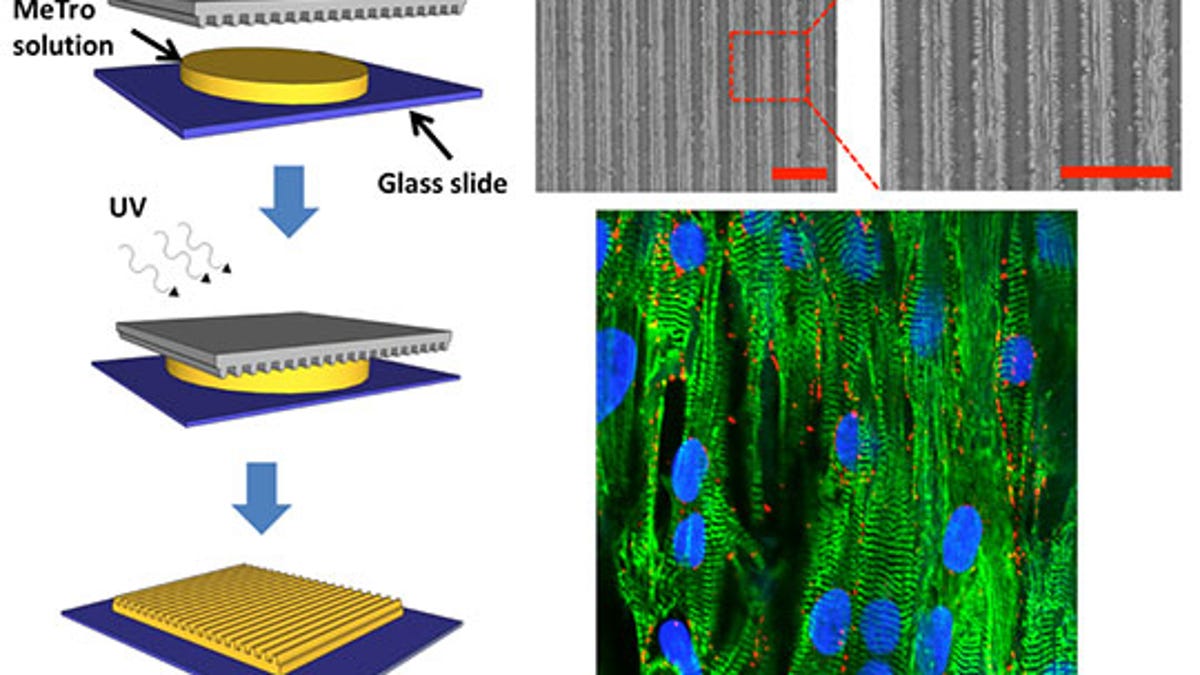A beating patch of cells could mend broken hearts
Harvard researchers create a heart patch using gels and 3D-printing technology that could someday lessen reliance on transplant surgery.

When the human heart is seriously physically damaged, modern medicine's solution can seem a bit brutal: rip it out and put another one in.
Harvard researchers may have just come up with a more elegant approach. They've created a layer of heart cells that actually beats on its own and could one day be used as a patch to repair major heart defects.
The research, presented Tuesday at the 247th National Meeting & Exposition of the American Chemical Society (ACS), was conducted by Ali Khademhosseini and Nasim Annabi from the Harvard Medical School, along with a team from the University of Sydney in Australia led by Anthony Weiss.
In their previous research, the team had worked with gelatin-like substances called hydrogels that are made from proteins to mimic heart tissue. But the problem was that even though the researchers could make the hydrogels take on the properties of different tissues in the body, the gels kept falling apart; they simply didn't have the elasticity or durability of real human tissue.
To solve this issue, the researchers created a new kind of hydrogel from proteins called tropoelastin, found in all elastic human tissue. The process they used involved exposing the tropoelastin to ultraviolet light, which morphed it into a much more resilient substance they are calling MeTro gel. MeTro gel can extend to 400 percent of its length before breaking.
The scientists then built a micro scaffold out of the MeTro gel and used 3D-printing technology to etch it so that the heart cells aligned themselves in the right pattern as they grew on the structure. Once the heart cells were aligned within the grooves on the gel-based scaffold, they beat in synchrony when electrical stimulation was introduced.
Even though scientist have built organized structures of heart cells before, Annabi said, "To the best of our knowledge this is the first report of purpose-built, high-resolution patterns on the surface of an elastic human protein-based gel."
At a press conference at the ACS meeting Tuesday, Annabi added that the artificial tissues she and her team produced could be formed into patches that could be sutured onto damaged organs, or the hydrogel could be injected into the body and then hit with the ultraviolet light to form its scaffold in vitro.
The group is currently working on growing other tissues like blood vessels and skeletal muscles, and testing is beginning in animals larger than the rats used in the initial research. In this video on the work, Khademhosseini says that a further goal is not only to make tissues that are strong and stretchy, but to modify them further to have additional properties, such as making them like stem cells that receive information from other cells to learn how to differentiate themselves. In such a way, Annabi said at the conference, it might even be possible to grow new brain cells -- something to which I can already hear many a college student give a hearty "hooray!"

